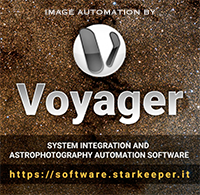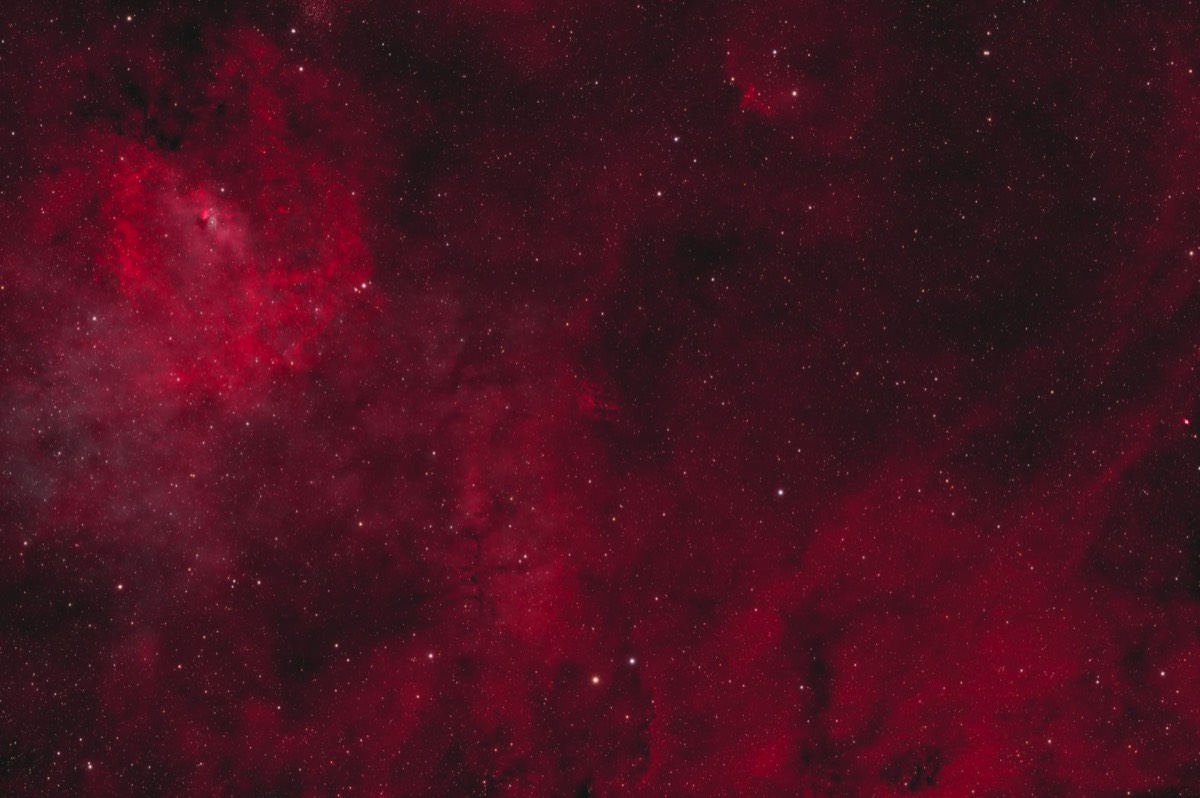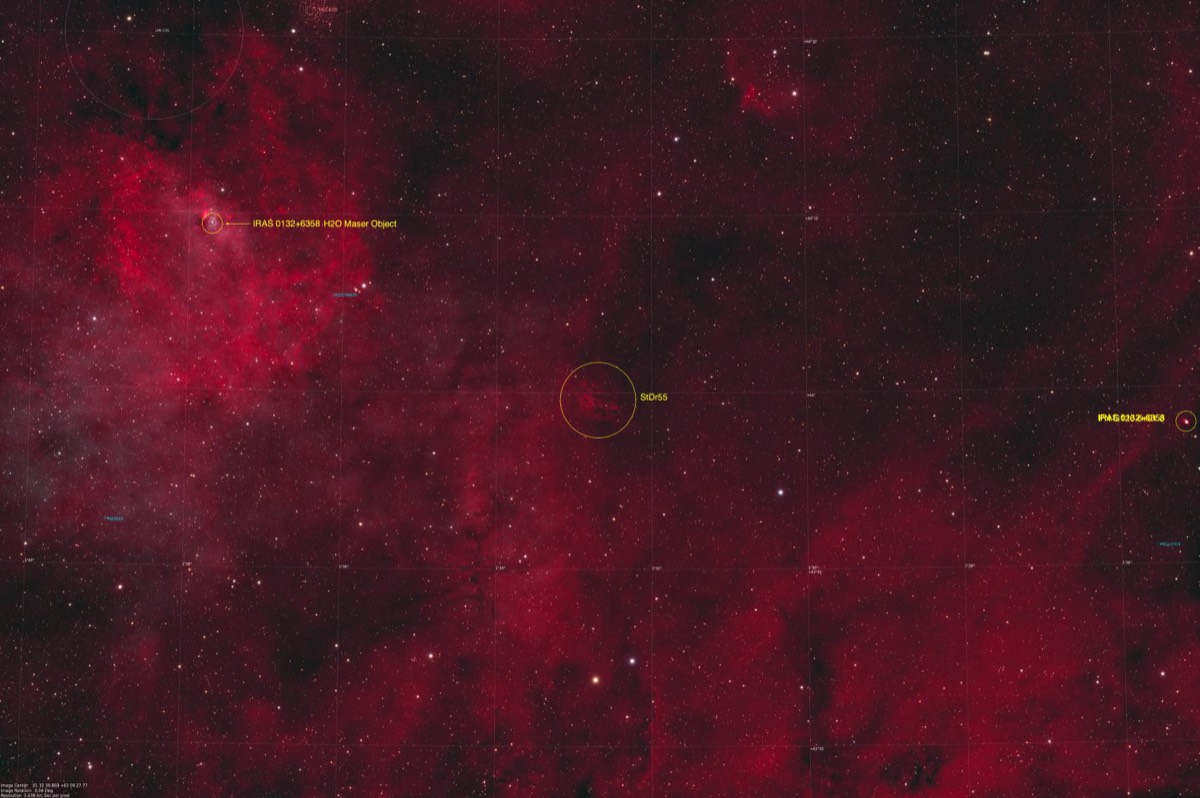Planetary Nebula Candidate StDr55 and surrounding region
Published 28 Feb 2024
About this object:
This image is the first deep color image of StDr55. StDr 55 is a planetary nebula candidate discovered by Xavier Strottner and Marcel Drechsler in June 2020. Its approximately 5 arc min in size and is located in the constellation Cassiopeia. In this wide field image, StDr 55 isn't easy to pick out but it is near center and looks like a slightly brighter area of emission with finger like extensions. The entire area here is dominated by red hydrogen emission with a small amount of oxygen emission near the bright nebula in the upper left corner. Several interesting objects are within the field of view and are highlighted below. The full resolution view of this image can be seen by clicking on the image above.
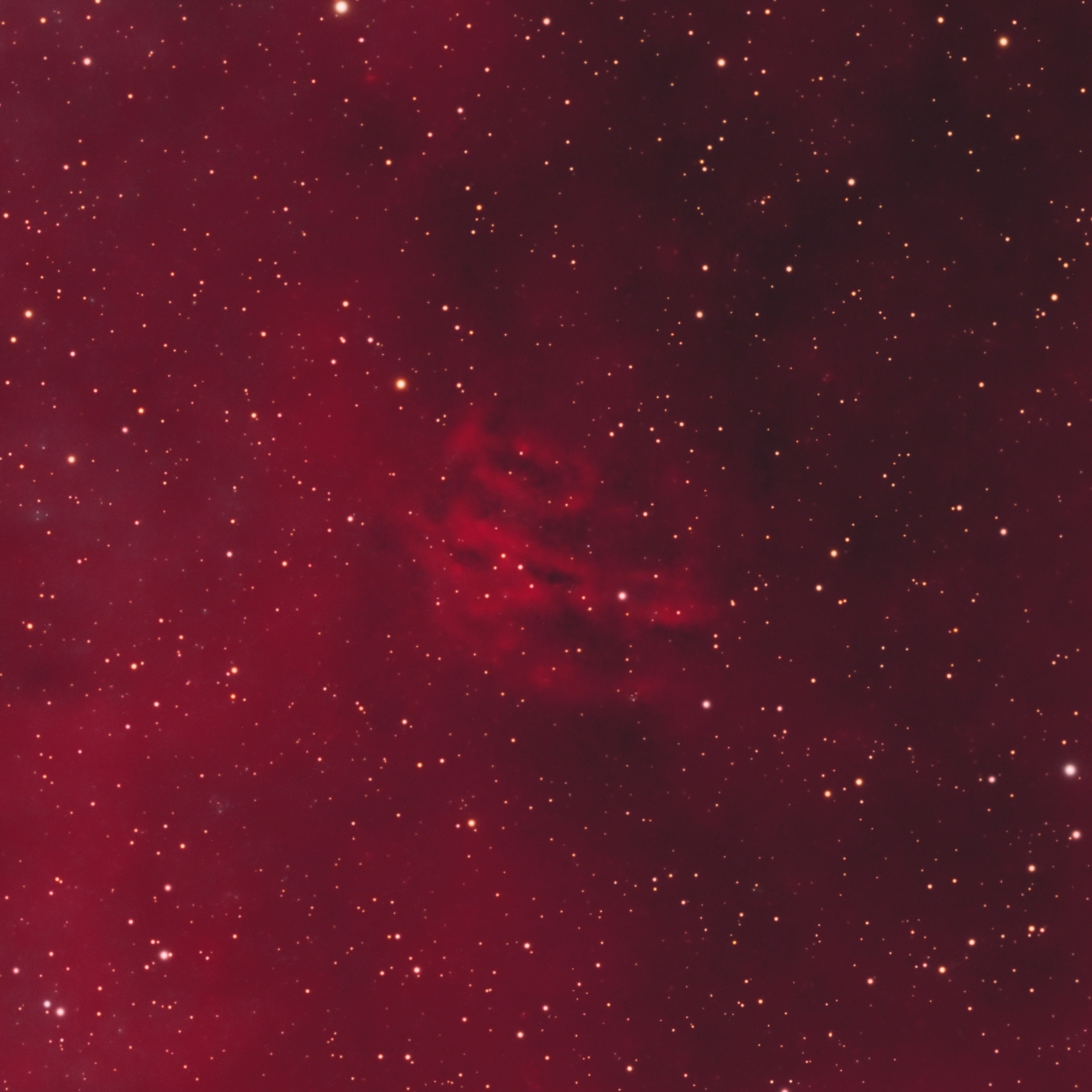
Above is a full resolution crop of StDr 55. It's thought by the discover's that StDr55 is an ancient planetary nebula. So old that its lost all of its OIII emission and is now mainly composed of HII/NII emission. The discover's named this object "Methuselah". Its irregularly shaped with finger like protrusions. It's not known how far away StDr55 is but some areas of the surrounding region are thought to be on one of the outer arms of the Milky Way at a distance of 26,000 light years.
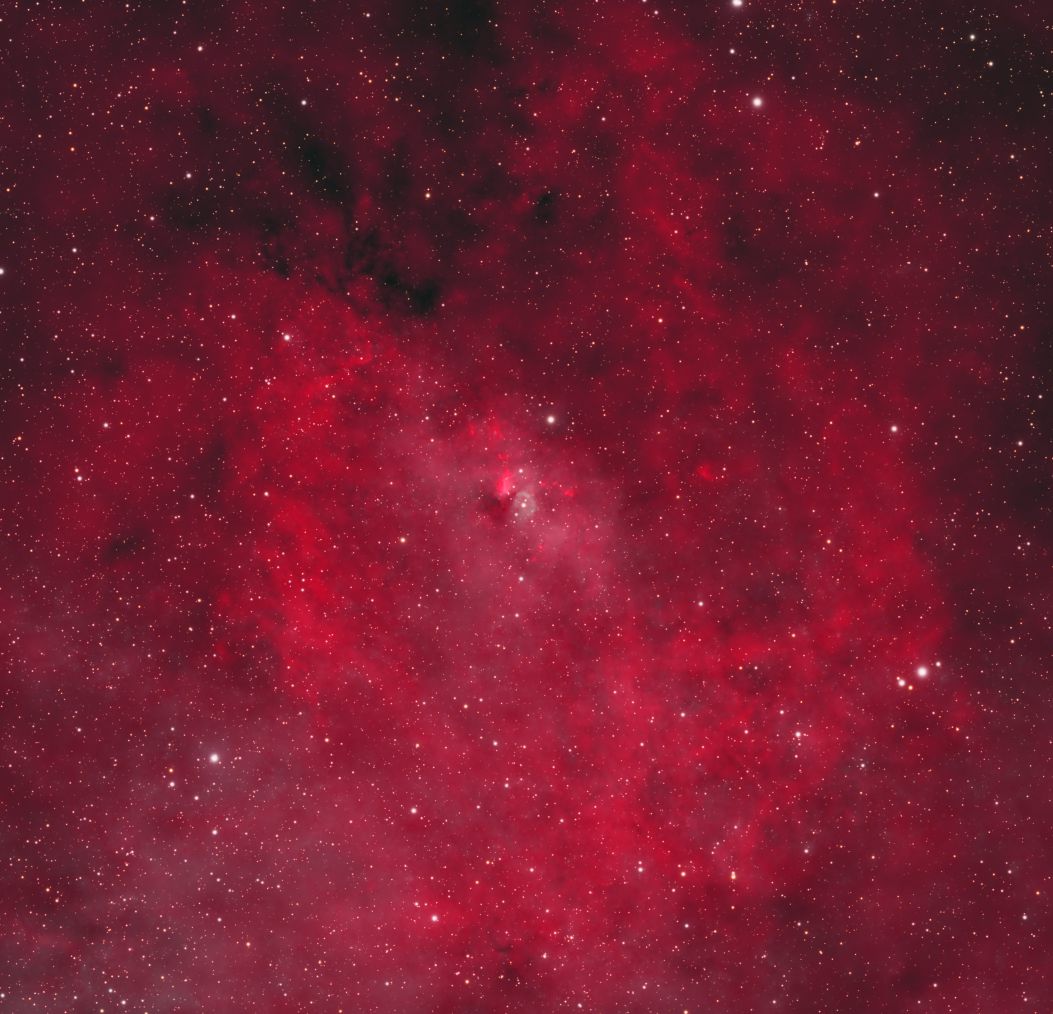
The above image is a crop of the brighter nebula in the upper left portion of the wide field image. This area has been studied as recently as 2004. The emission nebula is catalogued as DU 65.The bright star with a bubble feature around it is IRAS 01342+6358. It's a microwave source and is known as a Maser object. The designation this Maser object is G127.935+1.814. Maser stands for "Microwave Amplification by stimulated Emission of Radiation". O2 rich evolved stars sometimes host H2O masers in their circumstellar envelopes. In this case, H20 molecules undergo stimulated emission. The circumstellar disk around this star is possibly a reflection of this radiation. In this image it showed up in the OIII wavelength only.
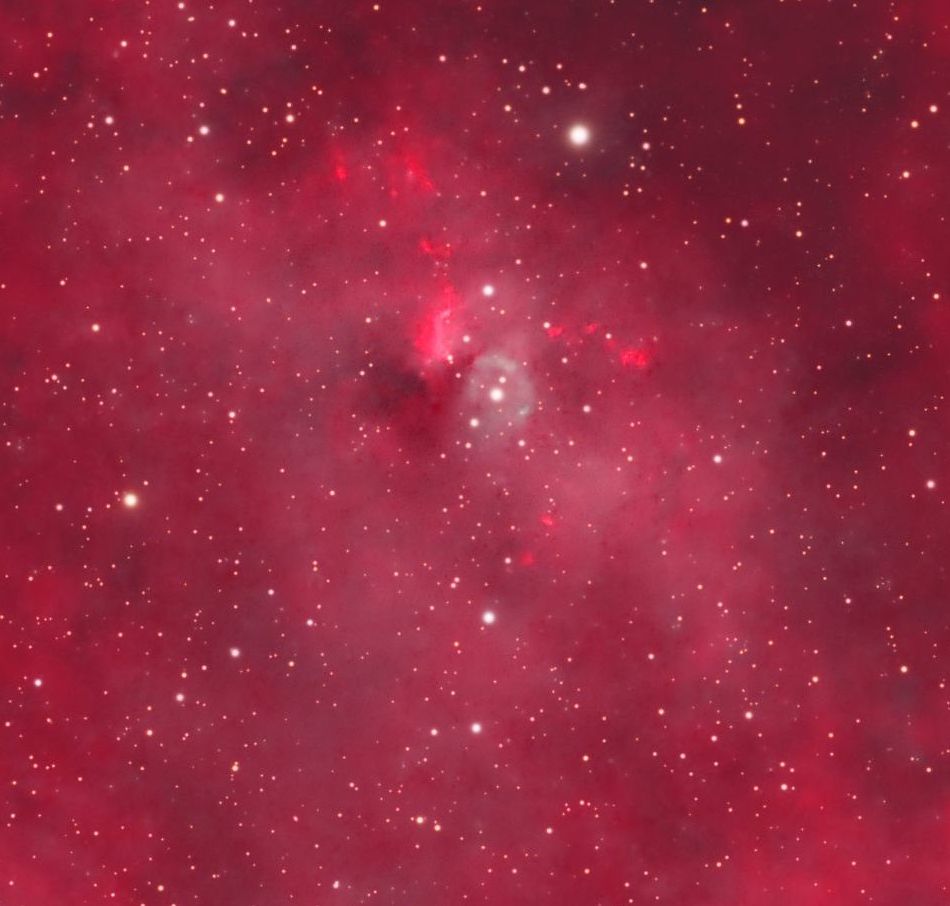
The above image is a full resolution view of the Maser object IRAS 01342+6358 and the circumstellar disk around the star. There are very bright HII nodules around this star which are unusually bright. This region was studied in 2004 and HII emission is thought to be photo ionized by OB type star. This area is thought to be extremely far away at the edge of the galaxy. The distance is estimated to be 8.2 Kpc or 26,744 light years. It's thought this area is over 200 light years wide.
The above annotated image shows where the significant objects are within the image. A higher resolution version can be seen by clicking on the image. Other than the objects discussed above, along the right end is the very bright planetary nebula IPHASX J012507.9+635652. Its also known as PN G126.6+01.3 and is 33 arcsec in size.
- Optics : Stellarvue SVX 152T refractor @f8 1200mm FL
- Mount: Paramount MYT
- Camera: ZWO ASI6200
- Filters: Chroma 50mm RGB, 5nmOIII, Astrodon 5nm Ha
- Exposure (min): RGBHaOIII 120:120:120:1160:1160 44.6 hrs, 2x2 binning drizzled to 1x1 resolution
- Automation Control: The Sky X, Voyager, PrimaluceLab Eagle 4
- Guiding: ZWO ASI174MM
- Processing Software: PixInsight
- Location: Stark Bayou Observatory, Ocean Springs, MS
- Sky: Typical SQM 19.6-20.1, Bortle 5, Suburban
- Date: Nov 23-Jan 24

